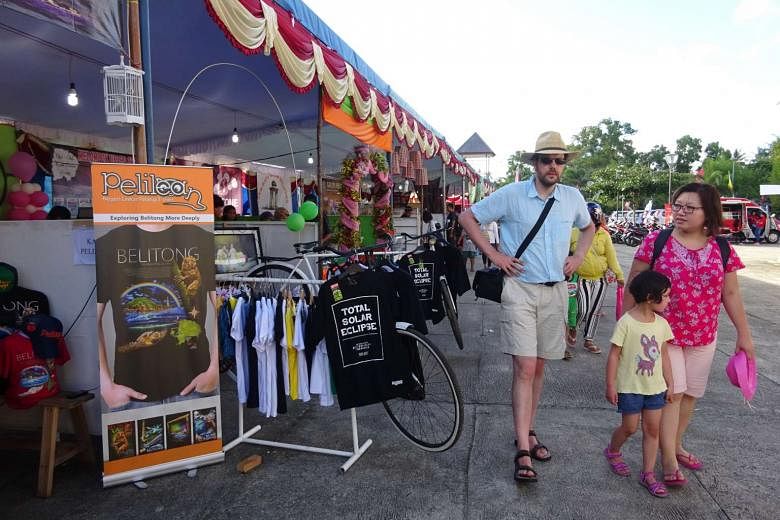When will the eclipse occur?
Tomorrow's solar eclipse will happen between approximately 7.20am and 9.30am.
The peak of the solar eclipse will be at 8.23am, where a maximum of 87 per cent of the sun is expected to be obscured by the moon when viewed from Singapore.
How can I view it?
Anyone keen on observing the solar eclipse is advised to do so with extreme caution. Serious and permanent eye damage may occur as a result of looking at the sun without proper equipment. A pair of solar filters or glasses is needed for safe viewing.
The same rule applies to devices used to take photographs of the solar eclipse, as focused sunlight may potentially heat up and crack the optics of cameras.
Below is a non-exhaustive list of unsafe methods to view the eclipse: Both polarised and non-polarised sunglasses; solar film used in cars and household windows; tinted glass, such as brown and green coloured beer bottles; photographic negatives; X-ray film; CDs/DVDs; photographic filters; looking at the reflection of the eclipse through a bowl of water or a mirror; welding glasses which do not block out ultraviolet and infared light.
Are there events that I can attend to view it?
There are three public events The Straits Times recommends:
- The National University of Singapore will host Solar Eclipse 2016 @ NUS event, to be held over two days - today and tomorrow. Members of the public can join in the activities for free, which will kick off with an exhibition at 2pm today at the Faculty of Science.
- At the Science Centre Singapore, thousands are expected to turn up at an eclipse viewing event beginning at 7.30am tomorrow. A live stream of footage from the total eclipse viewed in Micronesia will be screened.
- The Astronomical Society of Singapore will be organising an event at Labrador Park beginning from 7am tomorrow at the Red Beacon area, and members of the public will be able to view the solar eclipse safely through solar-filtered telescopes set up by the society.

